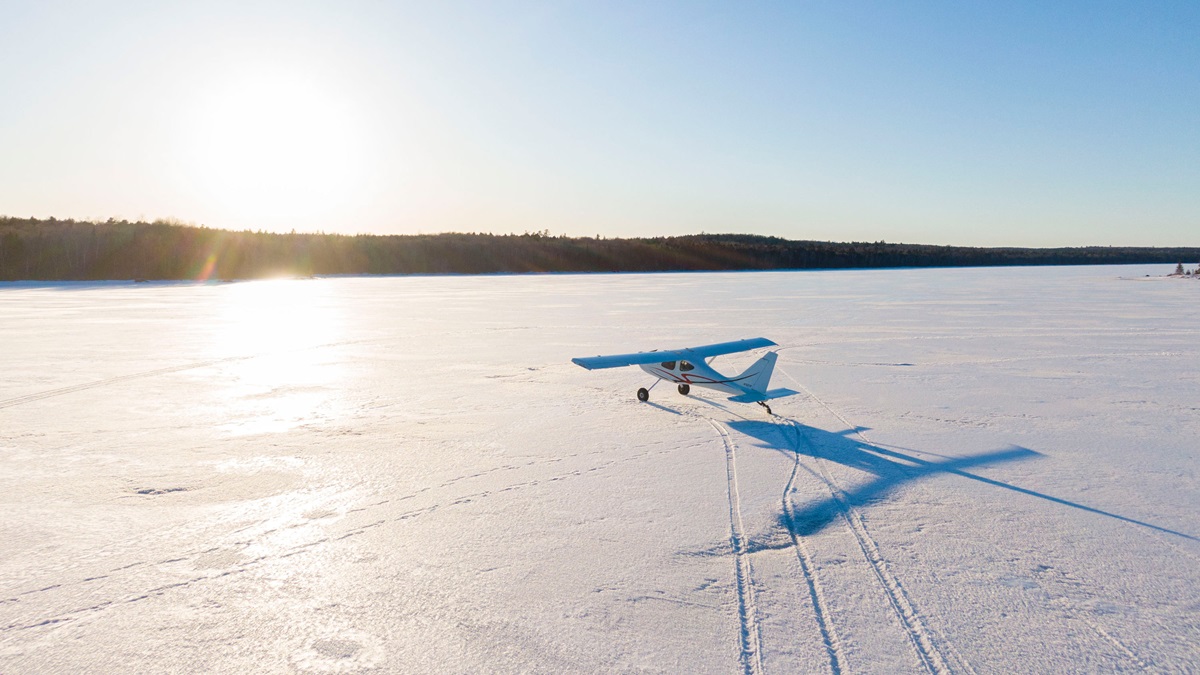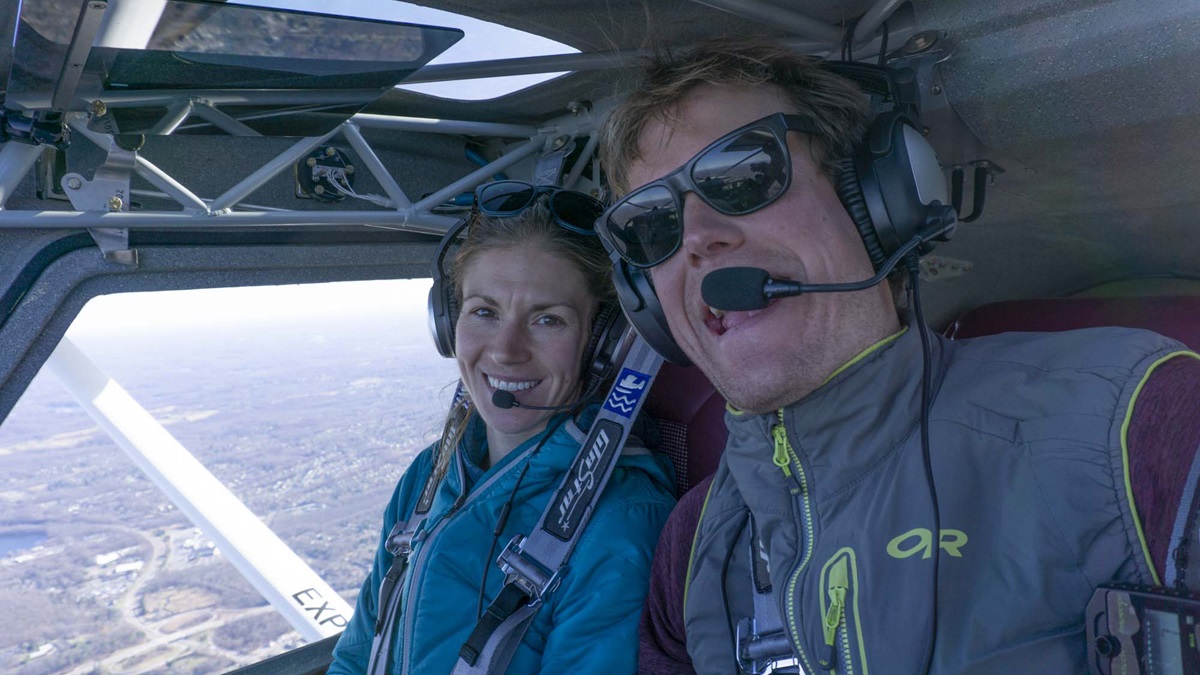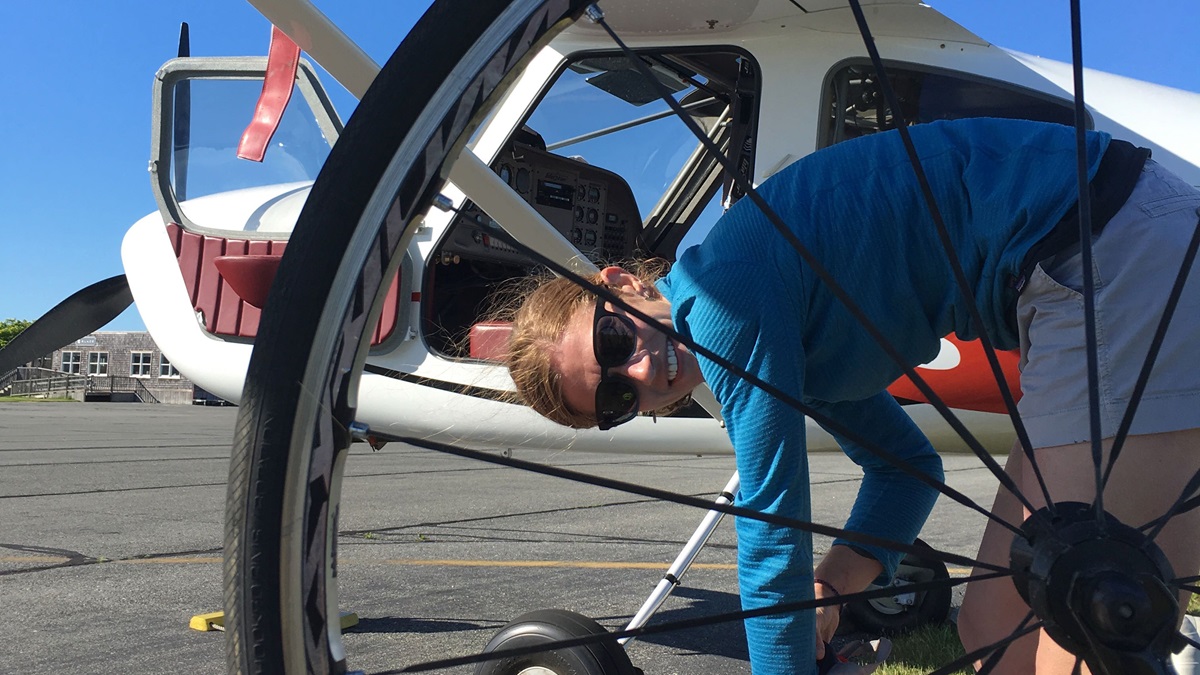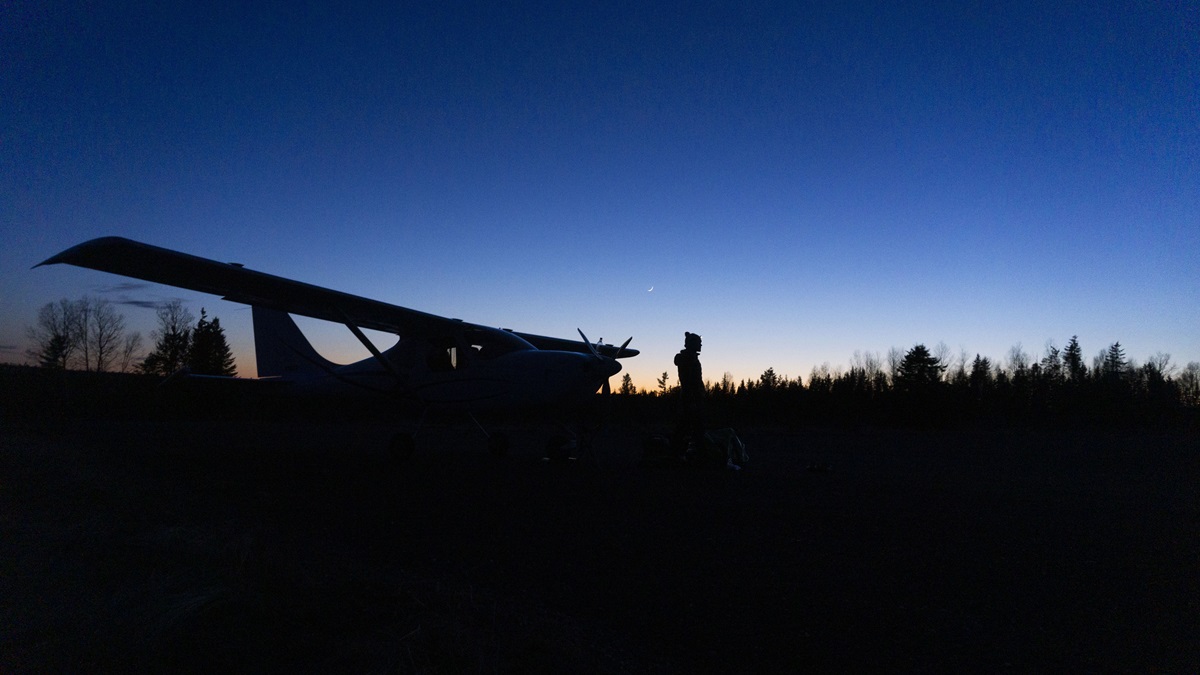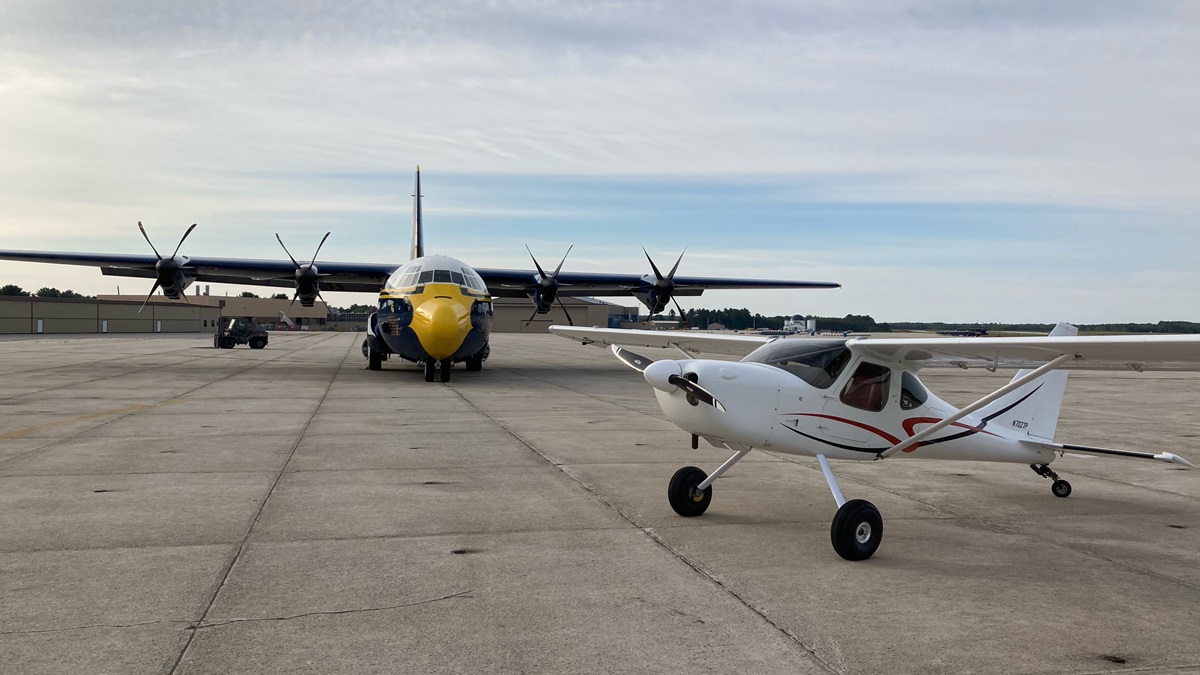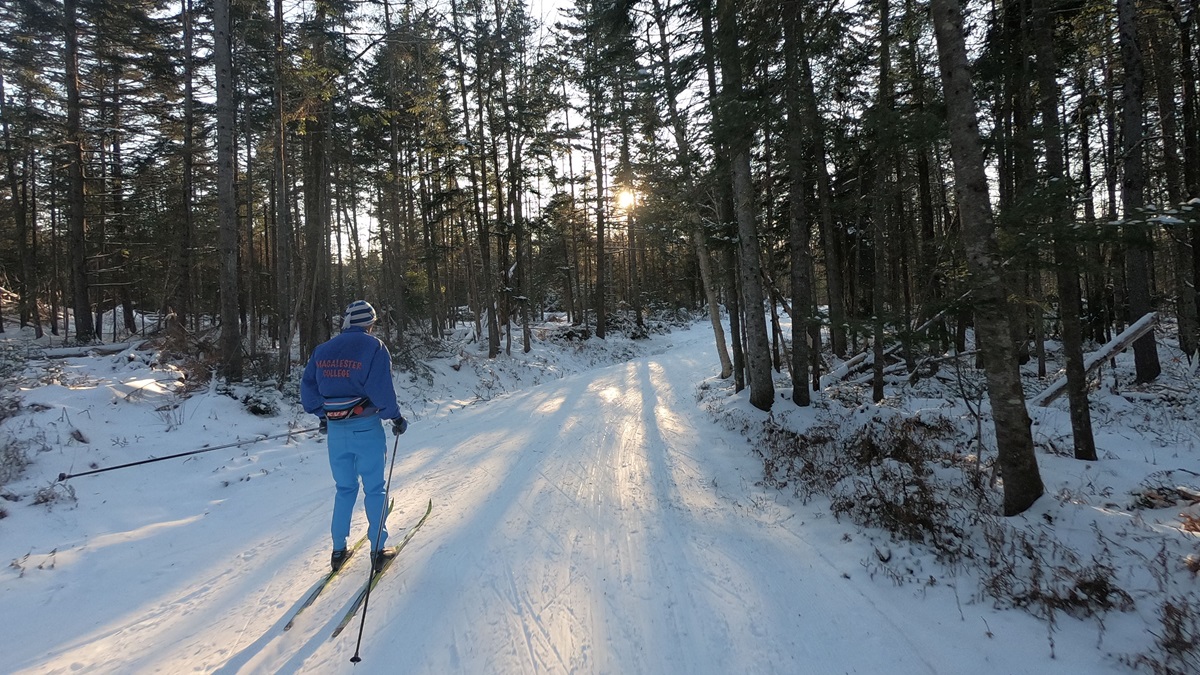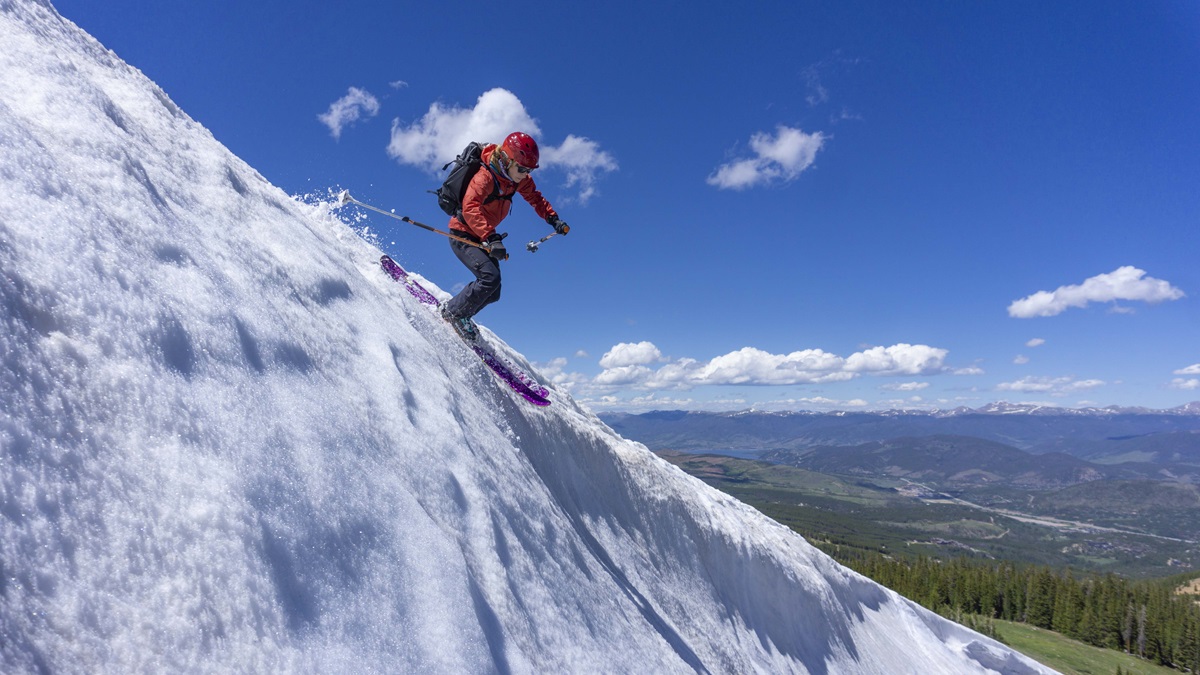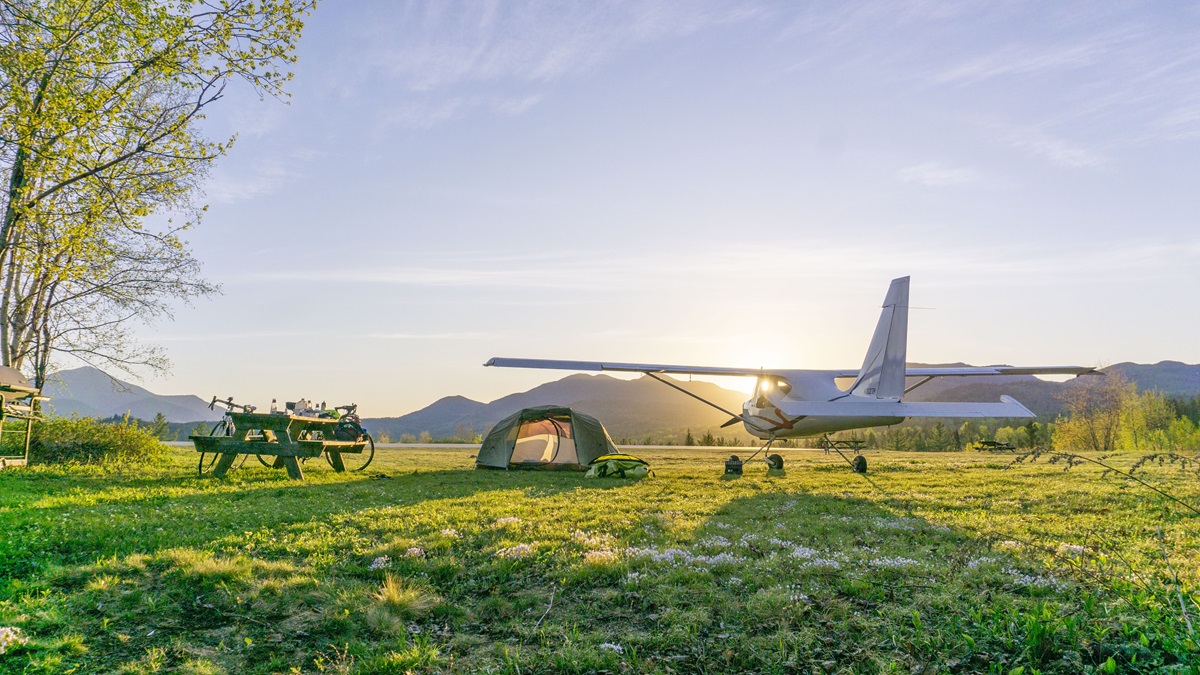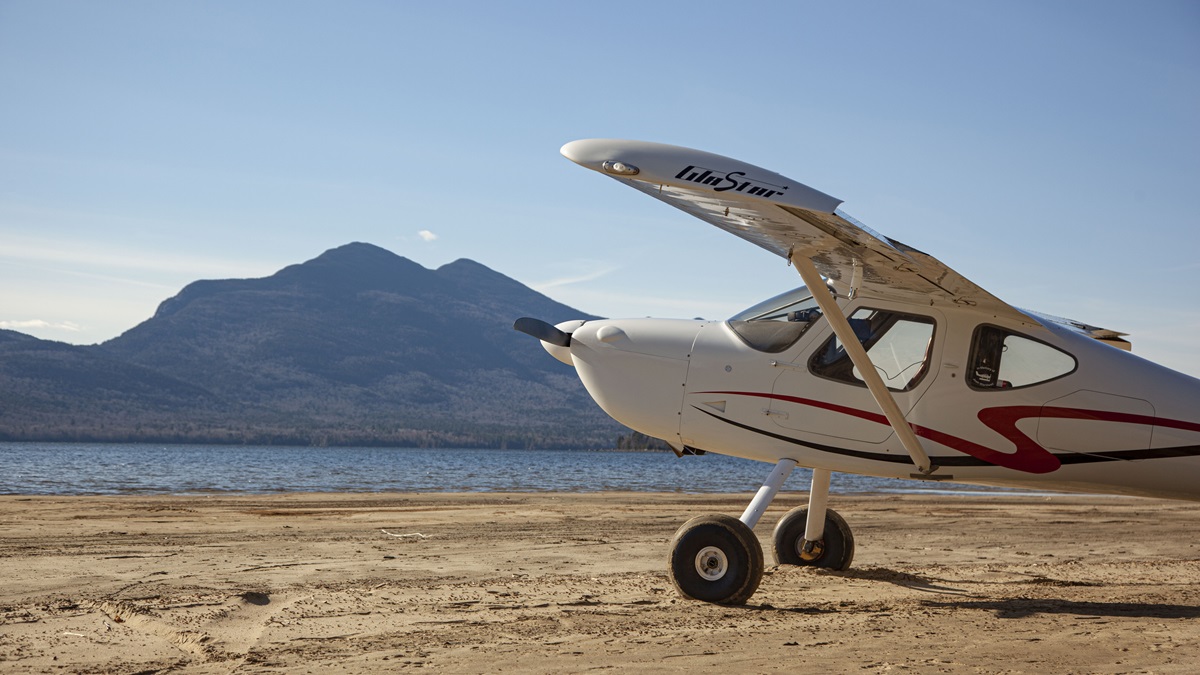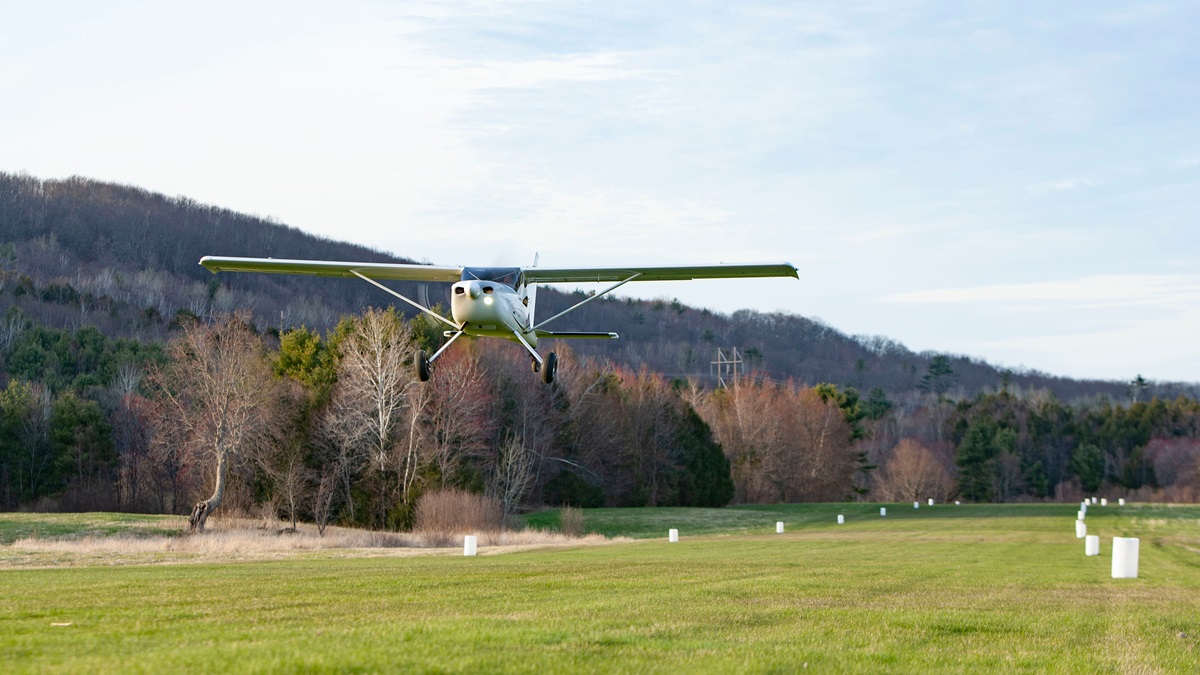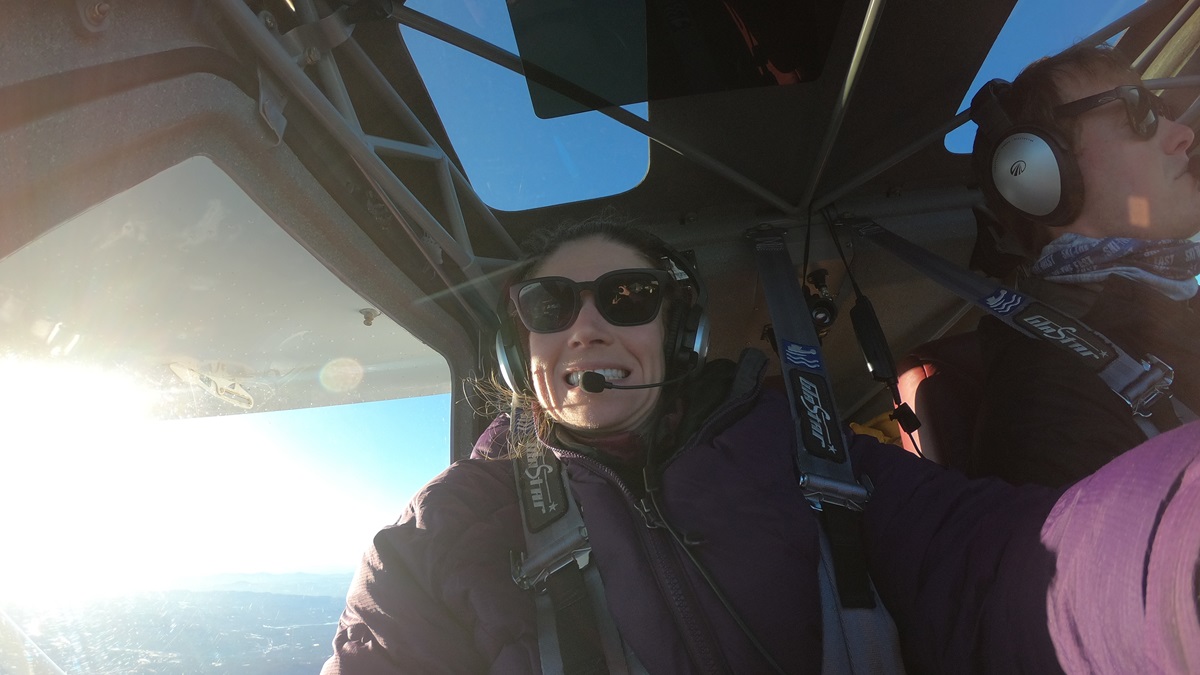Perfect match
An ideal airplane and pilot combination: Lincoln Benedict and his GlaStar
But sometimes, happily—although rarely—an airplane and its pilot/owner are an ideal match. When that happens, the combination creates possibilities for new adventures, unforeseen events, and unlikely connections that wouldn’t have been possible otherwise.
Such is the case for Lincoln Benedict and wife Jessica Marion—two outdoor-oriented New England adventurers who participate in mind-bending endurance sports year-round: alpine and Nordic skiing, mountain and road biking, trail running, ultra-marathons, hiking, and camping.
Lincoln works for L.L.Bean in Freeport, Maine, and he’s a dedicated VFR pilot who has logged nearly 1,000 flight hours since earning a private pilot certificate in 2016. Jessica is an educator, and the driving force behind their extreme endurance events. She appreciates the transportation benefits of flying but isn’t infatuated with it.
Their first airplane was a 1960 Cessna 172 that carried them on their honeymoon trip to Newfoundland in the summer of 2017, and Lincoln flew it about 400 hours in the three years they owned it.
“I was thinking about upgrading the 172, or getting one with a bigger engine, or a 182,” he said. “A Cessna 180 seemed out of my price range. A friend suggested a Glasair Sportsman, but that, also, was beyond my budget.” A hangar neighbor owned a GlaStar—the two-seat predecessor of the Sportsman—and knew of another that would soon be for sale.
“The GlaStar checked all the boxes for me,” Lincoln said. “It’s faster than my 172, more modern, has decent short-field performance and could be converted between nosewheel and tailwheel relatively easily.”
Lincoln went to Auburn, Maine, to meet Leo Leclair, see the GlaStar he had built, and critically, find out whether his bike and Jessica’s could fit in the baggage compartment together.
“They fit, and that was the main thing I wanted to know,” Lincoln said. “Leo’s a real Mainer, a craftsman who was getting ready to retire from the Bath Ironworks after a career building ships, and he looked at me like I was nuts. As I was checking the airplane out, he was scoping me out. Truthfully, his was a far nicer airplane than I ever expected to own.”
The more Lincoln learned about the builder, the more convinced he became that this was the airplane he should get. Leclair had personally built or assisted in the construction of many airplanes, and this one was his latest and best. Leclair spent nine years making every detail on the GlaStar as perfect as he could, and all of it was documented in photo books.
The two came to terms on the sale in January 2019, but Leclair didn’t just hand over the keys. There were a few things that he still wanted to do with the airplane—including a final condition inspection—and those weren’t finished until May.
Learning to fly it
The GlaStar was far lighter than Lincoln’s old Cessna and had a much more powerful 180-horsepower Lycoming engine, but Lincoln said the checkout process was thoroughly enjoyable.
Jessica was a bit unnerved by the airplane’s “experimental” label and the FAA-required passenger warning placard in the cockpit.
“It allows me to land on frozen lakes and beaches that wouldn’t be suitable for a nosewheel. I get a lot of satisfaction from tailwheel flying, and it just feels right.”
“She’d become accustomed to our 172 so this whole process was kind of scary to her,” Lincoln said. “The 172 wasn’t flashy, but it was reliable, and in all the places we’d gone in it, it had never let us down. Now, I was telling her to hop into an airplane with big experimental stickers on it that was built in a garage by some guy in Auburn and saying that all that was OK.”
They made some local flights in the GlaStar to nearby airports and grass strips, then expanded to longer flights over the Green Mountains to drop in on Lincoln’s family in neighboring Vermont. Soon, they were making more ambitious trips to visit family in the Mid-Atlantic, traversing the scenic Hudson River corridor in New York City and dropping into the Washington, D.C., special flight rules area along the way. Later, they flew the GlaStar to Chicago to visit Jessica’s family and continued west to Colorado for some off-season skiing. Another trip brought them to EAA AirVenture in Oshkosh, Wisconsin.
Lake Placid, New York, is one of their favorite airplane camping spots, and they’ve made multiple climbs to the top of Mount Marcy, the highest peak in the state. Their bikes come with them just about everywhere. It takes about 20 minutes to disassemble and pack them in the airplane, and about the same amount of time to put them back together. Cape Cod is another frequent destination, and it turns a stressful five-hour drive into an enjoyable one-hour flight.
Upgrades
Last summer, Lincoln had the airplane converted to its tailwheel configuration and put on larger (8.50) tires for off-airport explorations.
“I’m totally loving the tailwheel,” he said. “It allows me to land on frozen lakes and beaches that wouldn’t be suitable for a nosewheel. I get a lot of satisfaction from tailwheel flying, and it just feels right. Plus, I won’t lie, I really like the way the airplane looks.”
Lincoln has flown the GlaStar about 500 hours in the three years he and Jessica have owned it. It has a ground-adjustable Sensenich propeller and cruises about 125 KTAS at 2,400 rpm. Upgrades include a pair of Garmin G5 all-in-one attitude instruments, a Garmin GNX 375 navigator/transponder, and a TruTrak autopilot. The airplane carries enough fuel to fly about 4.5 hours with VFR reserves, but Lincoln says his longest legs are about three hours.
One of the most surprising aspects of owning the airplane for Lincoln has been the friendship he’s formed with Leclair, the builder.
“He’s kind of a taciturn guy, we’re from different generations, and we’d appear to have little in common,” Lincoln said. “But the more I learn about the airplane he built, the more impressed I am with the thoughtfulness and the skill that went into every piece. I’ve really come to like and respect the guy, and he’s been supremely patient with me.”
Leclair helped with the tailwheel conversion and quips that he wasn’t aware at the time of the sale that he’d also be providing “lifetime support service” for the aircraft. Yet he also says he’s glad the airplane went to an owner who flies it regularly, maintains it well, and enjoys it.
Future upgrades are likely to include 29-inch Alaskan Bushwheels and perhaps IFR instrumentation. For now, however, Lincoln said he intends to keep refining his tailwheel skills while bringing Jessica to the endurance competitions in which she excels.
“The airplane is a way we come together,” he said. “I love flying. She really likes running—and reinforcing how much faster she is than her husband. We both get something we want.” The only potential change on the horizon for the couple is the possibility of children, and they, of course, alter everything.
“We may start a family, and if that happens, perhaps there’s a Sportsman in our future,” he said. “But I’m very proud of this airplane. Leo did a tremendous job building it, and it really doesn’t need anything.”

